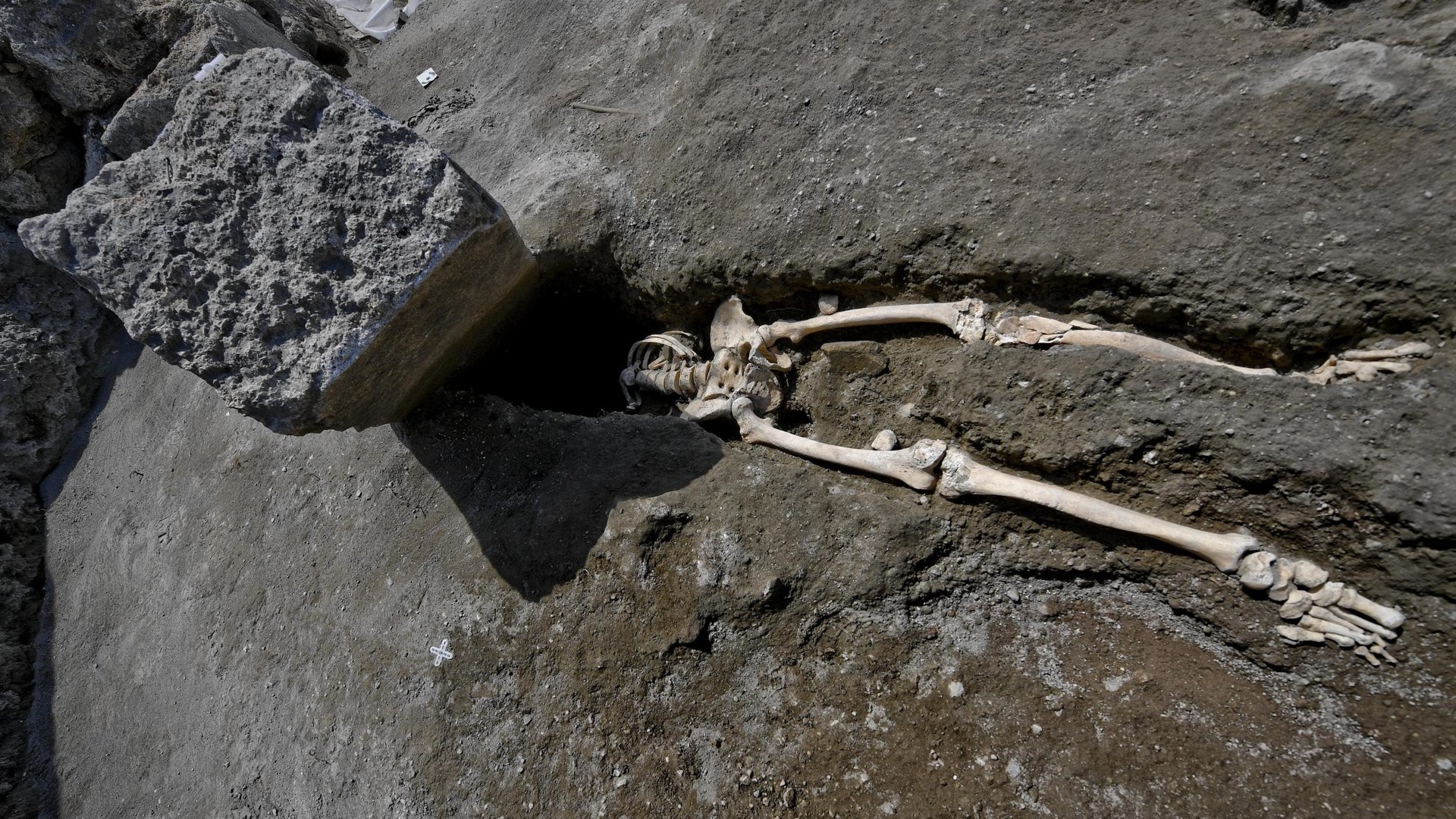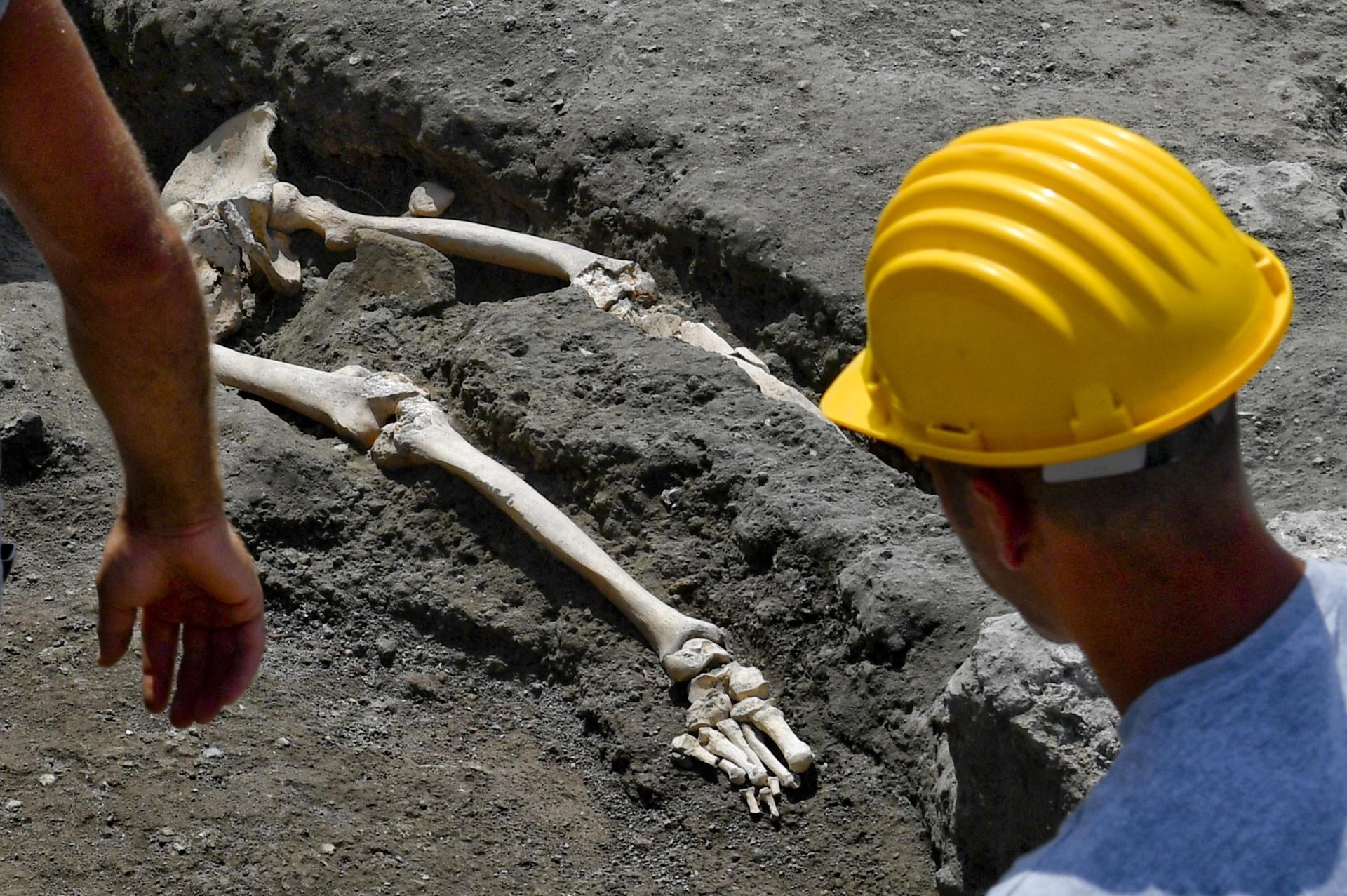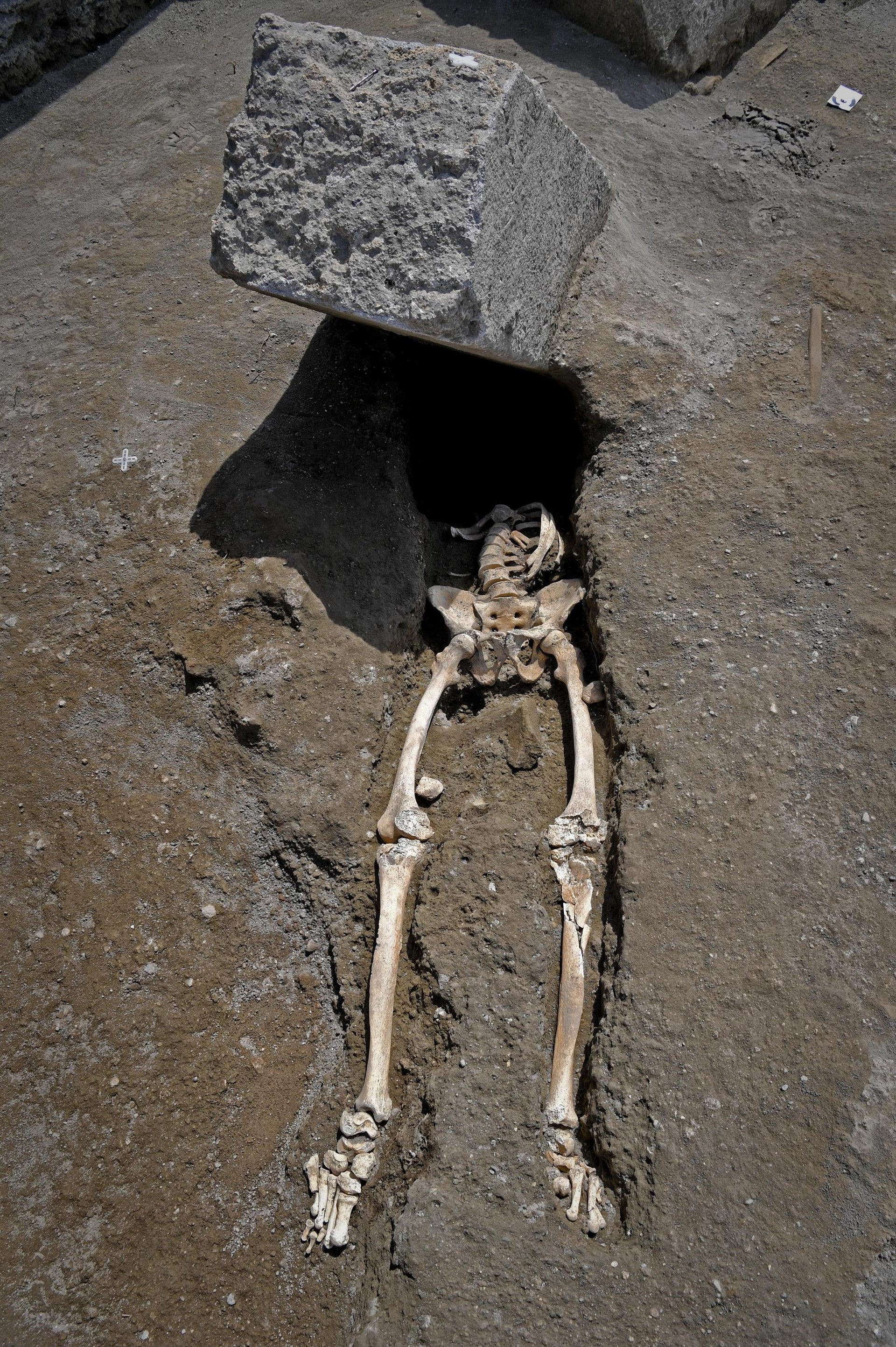Photo: One unlucky Pompeiian who survived Vesuvius’s eruption then got hit by a rock
When tourists visit the doomed ancient city of Pompeii, in Italy, they encounter a city frozen in a state of panic, an eerie tableau of a city’s populace fleeing the erupting Vesuvius in 79 AD. Amid the well preserved homes, taverns and plazas, are people encased in volcanic ash. Some were killed lying on the ground or reaching out in anguish. Some were killed in the embrace of another.


When tourists visit the doomed ancient city of Pompeii, in Italy, they encounter a city frozen in a state of panic, an eerie tableau of a city’s populace fleeing the erupting Vesuvius in 79 AD. Amid the well preserved homes, taverns and plazas, are people encased in volcanic ash. Some were killed lying on the ground or reaching out in anguish. Some were killed in the embrace of another.
Archeologists’ latest discovery at the famed ruins shows another tragic episode in the city’s destruction: the remains of a man who was crushed by a large falling stone.
The Associated Press reports that the remains are believed to be of a man who was at least 30 years old. It appears he was walking with a limp, stemming from an infected tibia. While he was fleeing, a large stone fell, crushing his thorax.
On the official website for the archeological site, experts reconstructed the timeline of this man’s demise:
Initial observations would appear to indicate that the individual survived the first eruptive phase of the volcano, and subsequently sought salvation along the alley now covered in a thick layer of lapilli [volcanic debris].
A formidable stone block (perhaps a door jamb), violently thrown by the volcanic cloud, collided with his upper body, crushing the highest part of the thorax and yet-to-be-identified head, which lie at a lower height of the lower limbs, and probably under the stone block.

